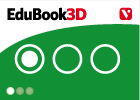Cargando...
Recursos educativos
-
Nivel educativo
-
Competencias
-
Tipología
-
Idioma
-
Tipo de medio
-
Tipo de actividad
-
Destinatarios
-
Tipo de audiencia
-
Creador
-

-

The 19th century industrial city - The industrialisation of European soc...
EduBook Organización
- 4316 visitas
Industrial society in the 19th century was centered in cities. The factories were located on large sites and with them, labour, services and transportation. Large urban industrial nuclei were born. Many…
-

Everyday life in the cities
EduBook Organización
- 4236 visitas
3.1. Roman houses There were two types of houses in Roman cities: the domus and the insula. Domus were individual houses of wealthy families. The entrance was a vestibule that led to an interior patio…
-

True/false. The main characteristics of the Iberians
EduBook Organización
- 3926 visitas
Decide if the following statements are true or false: The Iberians lived in the southern and eastern part of the Iberian Peninsula. ➝ The Iberians were very skilled craftsmen. ➝ The Iberians lived…
-

Observe. Egyptian tombs
EduBook Organización
- 3940 visitas
Look at the three types of Egyptian tomb and do the activities: Explain the differences between a mastaba, a pyramid and a hypogeum. What was the function of each construction? Where is the sarcophogus…
-

Everyday life in Athens
EduBook Organización
- 3785 visitas
4.1. Everyday life in Athens Like most Greek cities, Athens was surrounded by walls and had narrow streets. There were no sewers, water was scarce and no one collected the rubbish. The streets were full…
-

Blood circulation (II)
EduBook Organización
- 3613 visitas
The heart The heart is the organ that pumps blood to all the cells in our body. It is about the size of a closed fist. Its walls are made of muscle tissue. The heart contains four chambers: The two top…
-

Choose. Romanesque architecture
EduBook Organización
- 3353 visitas
Match the concept with the following definitions: Area of the church that corresponds to the arms of a cross design. Place where the two arms of the Lain cross design intersect. Structures resting on…
-

Romanesque art
EduBook Organización
- 3197 visitas
5.1. Architecture: religious art Romanesque art developed in Europe between the 11th and 13th centuries. Most Romanesque works of art are religious. This shows the huge importance of religion in…
-

Castles - Castles
EduBook Organización
- 2984 visitas
Long ago castles were built to protect people from enemies. The first castles were made of wood. They were small and were built on hills. There was a high fence1 all around them. Families lived in…
Te estamos redirigiendo a la ficha del libro...











